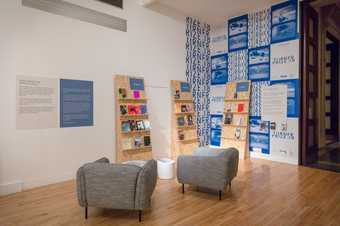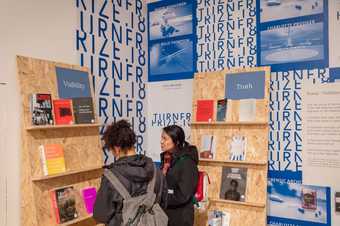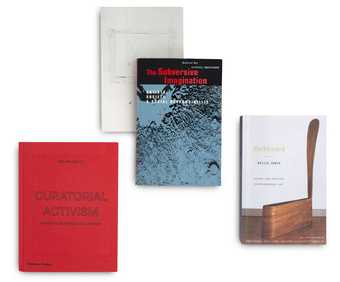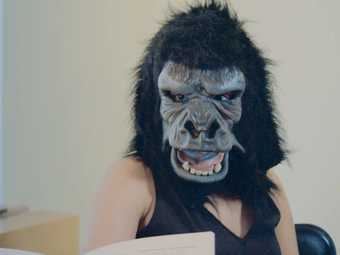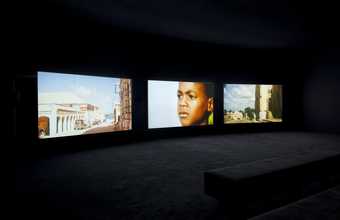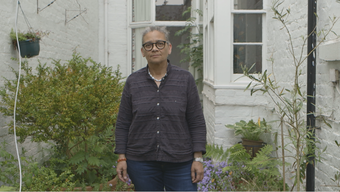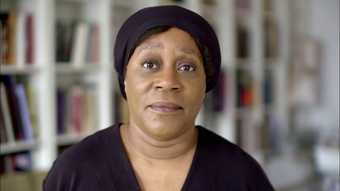Do you see yourself reflected in art history and the stories the gallery tells? Have you ever thought about the stories that might be missing? These texts chosen by Thick/er Black Lines, question, challenge and redress narratives that have ignored and excluded many. Use this list to start conversations with friends, collegues or your book club.
Top Picks
Thick/er Black Lines have chosen their top picks from their recommended reading list. These four texts explore ground-breaking exhibitions, feminist theory and the economics of contemporary art.
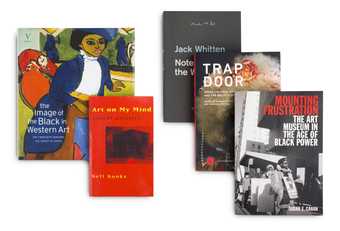
© Tate Photography, David Lambert
bell hooks, Art On My Mind: Visual Politics
Leading feminist theorist, bell hooks turns her critical lens to contemporary art, visual cultures and representation. Through a collection of essays, hooks offers her perspective on how to produce, exhibit, and critique art.
Thick/er Black Lines
Sadly, conservative white artists and critics who control the cultural production of writing about art seem to have the greatest difficulty accepting that one can be critically aware of visual politics – the way race, gender and class shape art practices (who makes art, how it sells, who values it, who writes about it) –without abandoning a fierce commitment to aesthetics.
bell hooks, 'Art On My Mind: Visual Politics'
Susan Cahan, Mounting Frustration: The Art Museum in the Age of Black Power
For those who were able to experience Tate Modern’s blockbuster Soul of a Nation: Art in the age of Black Power the artists and institutions mentioned in this text will be familiar. The book is the result of ten years of investigative work on New York City’s major museums and their early attempts to grapple with the civil rights movement and African American art.
Thick/er Black Lines
Julian Stallabrass, Art Incorporated: The Story of Contemporary Art
You cannot think about art without considering the financial entanglements that are woven into its production and consumption. This is a short but necessary read to help us begin to understand some of the machinations of money, power and influence in contemporary art today.
Thick/er Black Lines
Guerrilla Girls, The Guerrilla Girls' Bedside Companion to the History of Western Art
This is an essential guide for those who want to begin think more critically about what we are taught about art history, whose history that is, and how others are excluded from it. The Guerrilla Girls’ radical, collective practice is not only fun and visually dynamic, but most crucially, informative with statistics to back it up.
Thick/er Black Lines
Stefano Harney & Fred Moten, The Undercommons: Fugitive Planning & Black Study
... it cannot be denied that the university is a place of refuge and it cannot be accepted that the university is a place of enlightenment. In the face of these conditions one can only sneak in ... to the university and steal what one can. To abuse its hospitality, to spite its mission, to join its refugee colony, its gypsy encampment, to be in but not of – this is the path of the subversive intellectual in the modern university.
Stefano Harney & Fred Moten, 'The Undercommons: Fugitive Planning & Black Study'
Rasheed Araeen, The Success and Failure of the Black Arts Movement
Has anything altered, except that some black artists have now won the Turner Prize?
Rasheed Araeen, 'The Success & Failure of the Black Arts Movement'
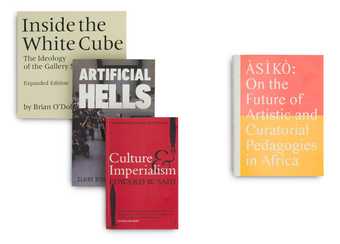
© Tate Photography, David Lambert
At a time when coverage of world affairs often leaves us with more questions than answers, the free sharing of knowledge is vital. Thick/er Black Lines aim to provide access to texts that address these global concerns and challenge dominant narratives. Book distribution is expensive and it can be difficult to share radical texts effectively, even for those committed to the conversation.

